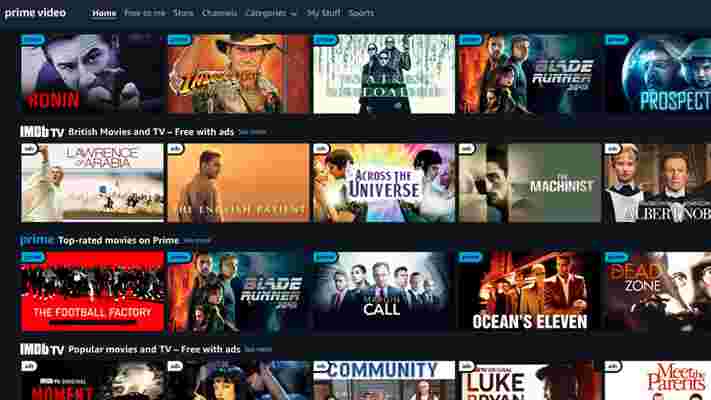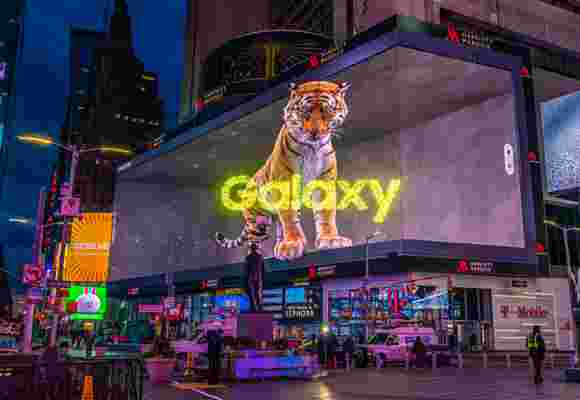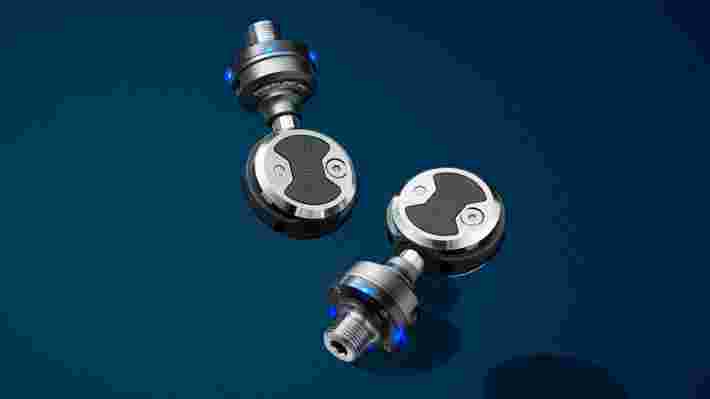8K TVs are here to stay, and it looks like Amazon Prime Video is getting fully behind the upgraded resolution technology.
Prime Video is the latest member of the 8K Association, a cross-industry body that exists to promote the growing ecosystem of 8K content and devices – and which also offers an 8K TV specification standard to ensure customers are getting a minimum bar of features and capabilities with every approved 8K television.
Prime Video joins the likes of Samsung, TCL and Panasonic in helping to forge a road map for 8K technologies, suggesting the TV streaming service has 8K TV shows and films in its sights.
You won't currently get 8K support on any mainstream TV streaming service – aside from the odd video on YouTube. Content providers are still getting to grips with 4K resolution support, and it will likely be a while before native 8K content – videos filmed and displayed in 8K – become a sensible business proposition for most of them.
While 8K TV sales are surging, they're still a fraction of the overall TV market, and the prevalence of mobile phones means that plenty of consumers are watching TV on comparatively low-res screens.
Nonetheless, 8K is certainly coming, and it makes sense for content providers to get involved in planning its future. Amazon's interest in 8K, though, is likely tied up not just in the general direction of the TV market, but also Samsung's current strategy around 8K TVs.
Is 8K the future of TV shows?
Prime Video creates huge swathes of original shows and movies, within an increasingly crowded market for streaming services – with Netflix and Amazon now having to compete with Disney Plus , Apple TV Plus , HBO Max and Peacock , among others.
While quality and diversity of content will separate the winners and losers in the short term, effective implementation of rising picture standards will be a key element in the long run – ensuring that the best TV streaming services look their best on high-spec home cinema displays.
And as 8K TVs drop in price , and become more readily available to the average household – in the way that 4K TVs now are – support for native 8K content is only going to become more important.

We already see this for dynamic HDR standards like Dolby Vision and HDR10+ , which elevate the picture quality possible on compatible television screens, but which are implemented pretty inconsistently across different streaming services. While Amazon supports both standards, for example, it mostly stocks titles in the less-widespread HDR10+ format, whereas the likes of HBO Max and Netflix opt exclusively for Dolby Vision.
What's worth noting, though, is that Samsung TVs exclusively support HDR10+ over Dolby Vision, meaning that Prime Video is one of the best smart TV apps for Samsung TVs .
With Samsung aggressively pursuing 8K resolution for the best Samsung TVs each year, Amazon is likely only cementing its position – well worth doing, given Samsung's status as the largest TV seller worldwide.
It's only just begun
The 8K Association's certification is only getting more complex, with the introduction of an Ambient Contrast Ratio (ACR) standard "to help ensure good picture quality performance in different ambient lighting conditions."
Gaming specs like VRR (variable refresh rate) and ALLM (Auto Low Latency Mode) are also now baked in to the certification, meaning gamers should be able to buy an 8K TV with confidence in its ability to display current-gen console games at their best.
8K isn't quite the dominant force it may one day be, but minimum expectations for 8K quality are increasing all the time – and seeing content providers like Prime Video get behind these standards can only be a good thing in the long run.
Samsung Galaxy S22 will launch in the Metaverse, too
Why shouldn't the most eagerly anticipated Android phone, most likely called Samsung Galaxy S22 , also launch in the most-talked-about virtual space: the Metaverse.
When Samsung officially shows off its nifty Android gadgets on February 9 at 10am ET, it'll do so online, in a YouTube video, on social media, and in a virtual re-creation of its downtown New York City location called 837X (the physical address is 837 Washington St.).
Samsung built the virtual store inside Decentraland , a 3D virtual world browser that might remind some of Second Life. However, Decentraland, which launched in February 2020, is also a cryptocurrency playground where members can connect their crypto wallets and purchase plots of lands as NFTs. Perhaps Samsung paid for its 837X space with some of its own Mana cryptocurrency.
Why the Metaverse? Why not? That's the better question. Even though few consumers really understand, use, or live in the Metaverse , it is the digital thing of the moment. Building a digital brick edifice in this slightly cheesy space is a wink and a nod to the crypto crowd that Samsung is hip to the blockchain and whatever it unveils on Wednesday – smartphones, tablets, more – is part of the crypto wave.
TechRadar took a quick tour through Decentraland to get a feel for the experience before Samsung's big event.
You sign up using your cryptocurrency wallet – for access to full features – but can also sign in as a guest. In either case, you get to design your avatar, including hairstyles, clothing, and accessories. Then you use your keyboard and mouse to navigate the 360-degree environment. We landed right in front of 837X. The only other enterprise of note was a pizzeria, but since we couldn't figure out how we'd consume digital deep-dish pizza, we passed.

Inside 837X is a cavernous, dayglo-color, techno music-infused space. There are glowing orbs, outfits you can apparently buy, and Samsung marketing. We stood still for a moment in one spot, but then our avatar started dancing of its own accord. We hope it'll know to stand still when we're watching the Unpacked Event.
If a real-world 3D experience is more your style, Samsung also just launched a series of eye-popping Galaxy video billboards (see above) in New York City, London, South Korea, Dubai, and Malaysia. In each, a giant corner billboard is transformed into what looks like a massive open-air space for the world's largest tiger, a friendly animal who likes to stick his giant claw outside the confines of the billboard screen.
As you might've guessed, it's a sophisticated visual effect that makes the screen space look smaller than the tiger.
Whether you choose to watch Samsung Unpacked in the Metaverse, on Twitch, or through Samsung's traditional website , be sure to bookmark TechRadar for all the details and our one-of-a-kind insight into what it all means.
New Wahoo Kickr Rollr trainer brings the feel of road cycling to your living room
Wahoo has unveiled its latest smart trainer, the Kickr Rollr, for pro-level indoor training at home. The trainer puts a new spin on the traditional roller design, with a frame that accommodates a wide range of frame and tire sizes, plus a quick-release wheelbase clamp takes the hassle out of attaching and removing bikes.
With no need to remove your bike's rear wheel, it's now far easier to switch between indoor and outdoor training, and there's no need to make changes to your bike setup when changing between the two.
This convenience will appeal to advanced cyclists who want to avoid changing their equipment before a race, but the Kickr Rollr is also beginner-friendly. Its Safety Tire Gripper secures the front wheel, providing plenty of stability when mounting, dismounting, and getting out of the saddle for big efforts – all without sacrificing the natural feel of the rollers.
It's available now for £699.99 (about $950 / AU$1,300), making it a much more affordable alternative to the standard Wahoo Kickr Smart Bike Trainer for cyclists new to indoor training.
Wahoo Powrlink Zero
Wahoo has also whipped the wraps off a new pedal-based power meter aimed at pro cyclists and triathletes. The Powrlink Zero power meter is built around the Speedplay Zero pedal system, which is designed to withstand everything from flat-out racing to 200-mile grinds. Its pedal-based design makes it easy to switch between bikes, and it's available in single-sided or dual-sided options.
The Powrlink Zero offers dual-sided entry, a low stack height, and adjustable pedal float from 0-15 degrees. It's also compatible with legacy Speedplay Zero cleats, if you're upgrading your existing training setup.

Its battery provides 75 hours of ride time between charges, and it connects to third-party apps and devices via ANT+ or Bluetooth. The single-sided option weighs 250g, while the dual-sided setup is 276g, adding minimal load to your bike, and they're on sale now for £549.99 (about $750 / AU$1,000) and £849.99 (about $ / AU$), respectively.
Alternatively, you can pick up the Kickr Roller trainer and the single-sided Speedplay Powrlink Zero together as a bundle for £1,199.99 (about $1,600 / AU$2,300).
Analysis: why choose a smart trainer?
Wahoo's new smart trainer is particularly beginner-friendly, but if you're new to indoor training then you might be tempted to opt for a static indoor exercise bike instead, After all, even with a clamp system that eliminates the need to remove your bike's back wheel, fitting a bicycle onto a trainer is still an extra step that gets between you and your workout.
First off, using a smart trainer gives you a much more realistic riding experience than a static indoor bike, as you're using the same equipment you would on the road, and the trainer's adjustable resistance means it can accurately simulate a wide range of road gradients.
A smart trainer also takes up much less space in your home, and they tend to be much less expensive than a static exercise bike of a similar caliber.
If you don't want the setup time of a trainer and would prefer to recreate a gym experience at home, an indoor bike is the better choice. However, if you're aiming to replicate the experience of riding on the open road, a smart trainer is the machine for you.